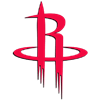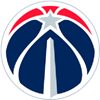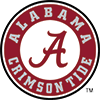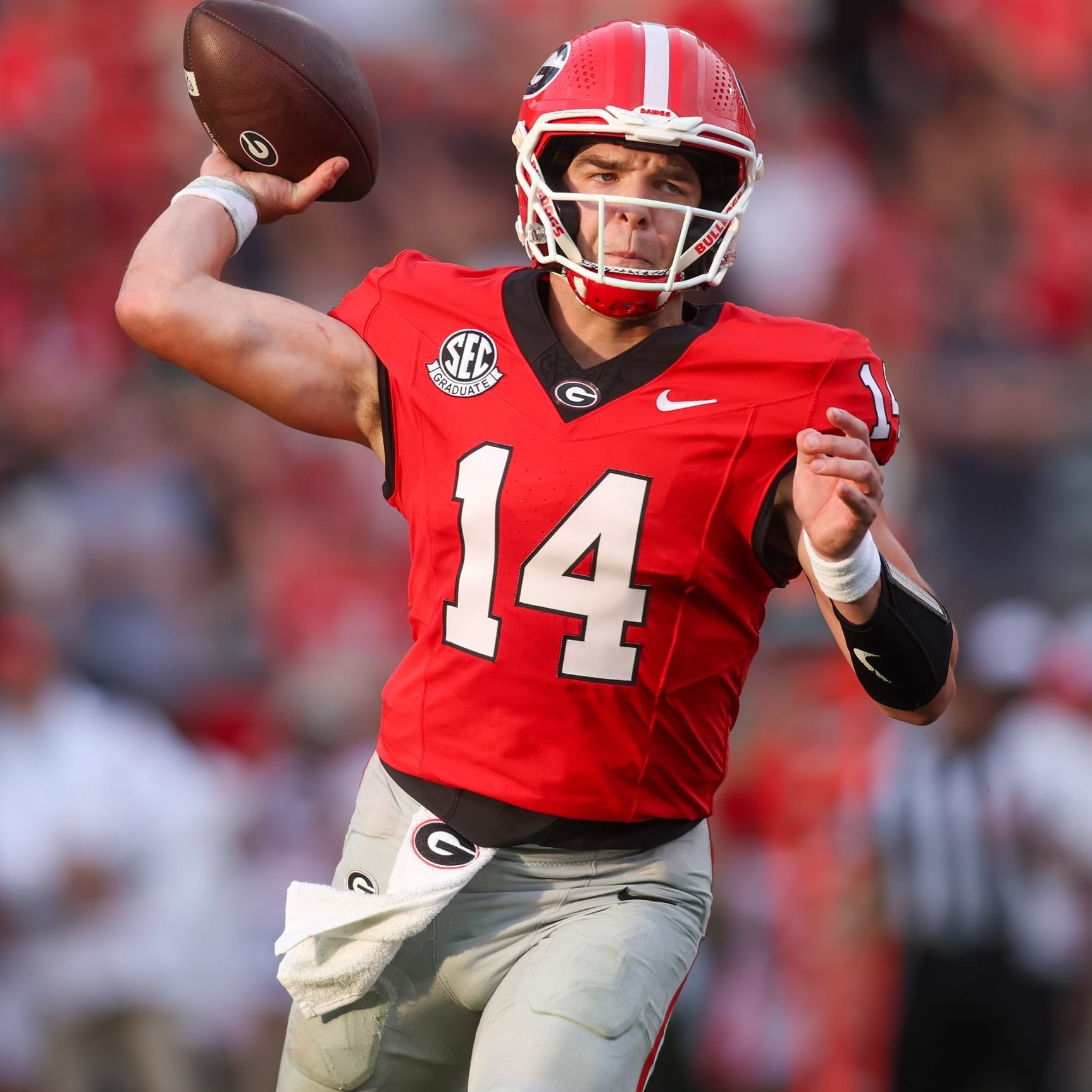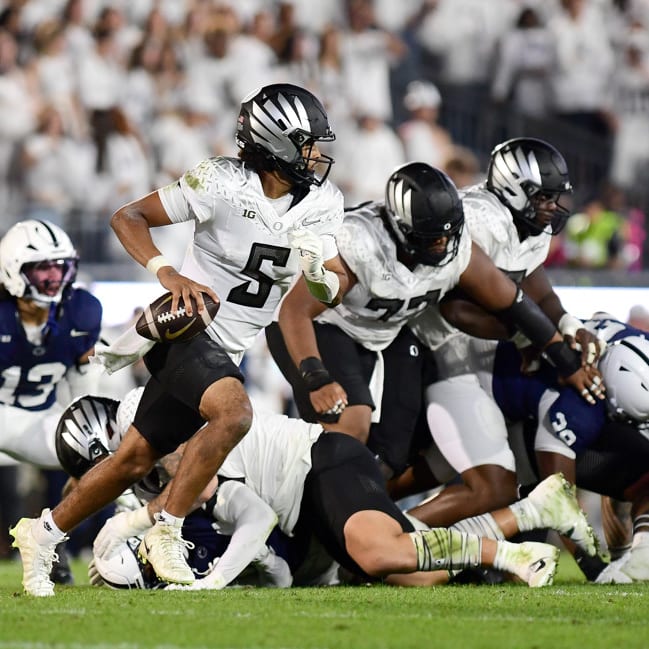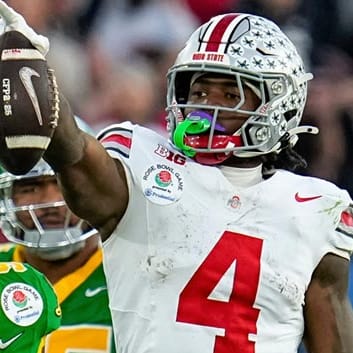1. Montee Ball, Sr., Wisconsin
Ball's numbers could decline drastically in 2012. His starting center, right guard and right tackle are gone, as is quarterback Russell Wilson, who in his lone season as a Badger may have been the most effective player Wisconsin has ever seen. The result is a lot more attention from defenses as Wisconsin breaks in a new, less effective quarterback and worse blocking against those additional defenders. Still, after running for 1,923 yards (6.3 YPC) and 33 touchdowns and catching 24 passes for 306 yards and six more scores, Ball can afford to lose a lot of productivity and still come out as the nation's top fantasy runner.
2. Joseph Randle, Jr., Oklahoma State
Randle would have challenged Ball for the top RB spot if he brought back the same team from a year ago, but he's likely to decline slightly in 2012. The extremely high touchdown volume he displayed last year (24 on just 208 carries) should fall off a cliff - the departures of quarterback Brandon Weeden and receiver Justin Blackmon will deprive the Oklahoma State offense of most of its quick-strike ability that so frequently set up Randle at the goal line last year. Backup Jeremy Smith is too good to keep off the field, as well. Still, Randle should be among the nation's best running backs. Just don't expect last year's numbers.
3. Kenjon Barner, Sr., Oregon
With LaMichael James in the NFL and Tra Carson transferring from
1. Montee Ball, Sr., Wisconsin
Ball's numbers could decline drastically in 2012. His starting center, right guard and right tackle are gone, as is quarterback Russell Wilson, who in his lone season as a Badger may have been the most effective player Wisconsin has ever seen. The result is a lot more attention from defenses as Wisconsin breaks in a new, less effective quarterback and worse blocking against those additional defenders. Still, after running for 1,923 yards (6.3 YPC) and 33 touchdowns and catching 24 passes for 306 yards and six more scores, Ball can afford to lose a lot of productivity and still come out as the nation's top fantasy runner.
2. Joseph Randle, Jr., Oklahoma State
Randle would have challenged Ball for the top RB spot if he brought back the same team from a year ago, but he's likely to decline slightly in 2012. The extremely high touchdown volume he displayed last year (24 on just 208 carries) should fall off a cliff - the departures of quarterback Brandon Weeden and receiver Justin Blackmon will deprive the Oklahoma State offense of most of its quick-strike ability that so frequently set up Randle at the goal line last year. Backup Jeremy Smith is too good to keep off the field, as well. Still, Randle should be among the nation's best running backs. Just don't expect last year's numbers.
3. Kenjon Barner, Sr., Oregon
With LaMichael James in the NFL and Tra Carson transferring from Oregon, Barner suddenly is the engine of the Oregon offense after previously playing a minor role. The result should be, as with any feature Oregon runner, gigantic numbers. In the three games that James did not play the last two years, Barner totaled 433 yards and seven touchdowns on the ground while adding 102 yards and a touchdown as a receiver. In addition, he totaled 1,123 yards and 14 touchdowns from scrimmage last year despite James' presence. Huge numbers await Barner in 2012.
4. Charles Sims, Jr., Houston
Sims' numbers at Houston are almost comical - he has 1,510 yards and 18 touchdowns rushing on just 242 carries (6.2 YPC) with 121 catches for 1,334 yards (11.0 YPC) and five touchdowns. He's lethal dual threat and the clear feature back in Houston's prolific offense - a first in his three-year career, which has otherwise been disrupted by the presences of Bryce Beall and Michael Hayes. Those two are gone, though, leaving a void of 244 touches in the Houston offense. Sims figures to get the vast majority of that.
5. Zach Line, Sr., SMU
Line might be a top-3 running back if 1) his 2011 season didn't end with a November toe injury and 2) most of his offensive line didn't leave in the offseason. Given those two factors, he's one of the more boom-or-bust options this season. He finished his 10 games last year with 1,224 yards (5.9 YPC) and 17 touchdowns - big numbers, to say the least. If he can keep running well despite his inexperienced offensive line, he should be a steal in many drafts.
6. Knile Davis, Sr., Arkansas
Durability has been an issue for Davis - bone breaks in particular - and it's perhaps the only reason he isn't ranked No.1 among running backs. He missed 2011 with a broken ankle, but with a size, speed and strength combination probably matched by no running back in the nation, Davis is devastating when is in on the field, as evidenced by his 1,028 yards and 12 touchdowns rushing (6.4 YPC) in seven 2010 starts. Those numbers just aren't supposed to happen in the SEC, but Davis was matchup-proof that year, pummeling Ohio State, South Carolina, LSU and Mississippi State run defenses that ranked in the top 40 for 588 yards and six touchdowns (5.4 YPC).
7. Chris Nwoke, Jr., Colorado State
Nwoke quietly was among the nation's most productive running backs in the second half of 2011, and he looks like a good bet to be an all-year terror in 2012. He wasn't given the starting role until midseason last year, but Nwoke totaled 884 yards and five touchdowns (6.6 YPC) in the six games after Oct. 1 (excluding the season finale in which he left early with an injury). His schedule in 2012 looks easier than last year's, furthermore, as his toughest opponent appears to be a Boise State defense that lost 11 prominent seniors, including four to the NFL.
8. Eddie Lacy, Jr., Alabama
Lacy has demonstrated absurd upside to this point in his Alabama career, totaling 1,080 yards and 13 touchdowns on just 151 carries - an average of 7.2 yards per carry and a touchdown roughly every 12 carries. The departure of Trent Richardson (283 carries in 2011) should result in a huge surge in production for Lacy, who at his current rate would finish with 2,024 yards and 24 touchdowns with Richardson's 283 carries. The presence of the talented Jalston Fowler will keep Lacy from getting that many carries, however, so his owners might need to settle for something in the 1,400-yard, 16-touchdown range.
9. DeAnthony Thomas, So., Oregon
If it seems ridiculous that two Oregon runners are in the top five, that's because it is. But it's not quite as it appears - Thomas isn't strictly a runner, but rather a running back/wide receiver hybrid who can post monstrous numbers without Barner leaving the field. Thomas' big-play ability is unrivaled - perhaps by any player in recent memory. He ran for 595 yards and seven touchdowns last year on just 55 carries (10.8 YPC) while adding 46 receptions for 605 yards and nine touchdowns (13.2 YPC) and two kickoff returns for touchdowns. With 16 touchdowns on a mere 101 touches from scrimmage as a true freshman last year, it's difficult to comprehend the height of Thomas' upside.
10. Rex Burkhead, Sr., Nebraska
As expected, Burkhead really broke out in 2011 after Roy Helu went to the NFL. Despite playing in an offense that lacked a legitimate passing game, Burkhead averaged 4.8 yards per carry while running for 1,357 yards and 15 touchdowns. He was fairly good as a receiver, too, catching 21 passes for 177 yards and two scores. His upside probably isn't especially high, but Burkhead's consistency (at least one touchdown in every regular season game but one) makes him a rock-solid fantasy fit.
11. Le'Veon Bell, Jr., Michigan State
Bell isn't as fast and wasn't as big a recruit as Edwin Baker or Larry Caper, yet he was wildly more productive than either last year, running for 948 yards and 13 touchdowns (5.2 YPC) while Baker and Caper failed to average 4.0 yards per carry. With the arrival of 2012, Baker is in the NFL and Caper is a complete afterthought, leaving Bell with the vast majority of the Michigan State running game to himself. Even with quarterback Kirk Cousins gone and perhaps defenses stacking against the run as a result, Bell should make a push for 15 rushing touchdowns this year.
12. Robbie Rouse, Sr., Fresno State
Even as Fresno State abandons its pro-style offense for more of a spread design, Rouse should remain the team's workhorse in 2012. He finished 2011 with 1,544 yards and 13 touchdowns on the ground (4.7 YPC) as well as 32 receptions for 228 yards and a touchdown in 13 games. Despite serving as the focal point of the Fresno offense, Rouse benefits from strong quarterback play (Derek Carr) that keeps defenses from stacking too heavily against the run, and he was relatively matchup-proof in 2011 as he produced against defenses like California, Nebraska, Boise State and Utah State, posting a combined 467 yards and two touchdowns against them.
13. Ray Graham, Sr., Pittsburgh
Graham is a mammoth boom-or-bust pick coming off a late-season injury from 2011. Graham suffered a season-ending knee injury in November, the nature of which Pittsburgh declined to disclose. New coach Paul Chryst - the former Wisconsin offensive coordinator - said Graham is expected to be ready for fall camp, however. If that is the case, then go ahead and move Graham into the top 10, because his new playcaller churned out nation-leading rushers year after year at Wisconsin, and Graham himself did quite fine in 2011 before the injury, totaling 945 yards and nine touchdowns rushing plus 30 receptions for 200 yards in seven games.
14. Branden Oliver, Jr., Buffalo
Oliver was huge for Buffalo last year, rushing for 1,395 yards and 13 touchdowns (4.6 YPC) in 12 games while adding 38 catches for 365 yards. He was particularly strong as a receiver in the final month or so, totaling 22 catches for 267 yards in his last five games. Buffalo's shaky passing game allows defenses to lock onto Oliver, which can result in bad numbers against good defenses. That obstacle led Oliver to average 4.0 yards per carry or less in seven of his 12 games last year.
15. Kerwynn Williams, Sr., Utah State
It's easy to fly under the radar when Robert Turbin and Michael Smith are running for 2,387 yards and 28 touchdowns, but Williams himself did fine in 2011 with 542 yards (6.7 YPC) and three touchdowns. Both Turbin and Smith have since gone to the NFL, though, leaving Williams with a near monopoly on a Utah State rushing attack that should remain strong. A couple other runners should emerge for Utah State - Joey Demartino and Joe Hill come to mind as potential candidates - but in general it appears as if there isn't much in Williams' way in a season that could see him push for 1,500 yards on the ground.
16. Giovani Bernard, So., North Carolina
Bernard isn't fast or strong and isn't especially explosive, but his great vision, patience and cutback ability makes it exceedingly difficult for defenses to track him down between the tackles. Bernard demonstrated an ideal feature back skill set last year, running for 1,253 yards (5.2 YPC) and 13 touchdowns while adding 362 yards and a touchdown on 45 receptions. His fantasy stock is a bit up in the air due to the arrival of coach Larry Fedora, who had a fondness for running back committees at Southern Mississippi, but Bernard should remain the team's feature back since he's so much better than his competition. Fedora had several runners with similar skill levels with Southern Miss, which is far from the case with Bernard in North Carolina.
17. Marcus Lattimore, Jr., South Carolina
It's unclear where Lattimore is in his recovery from a season-ending knee injury that involved unspecified ligament and cartilage damage in October, and that's the only reason he isn't listed in the top 10. Make sure to double check his status and adjust his ranking accordingly, but know that when he is on the field Lattimore is a high-end running back, as evidenced by his 2,015 yards and 27 touchdowns in 20 career games, not to mention 48 catches for 494 yards and three touchdowns.
18. Stepfan Taylor, Sr., Stanford
Even with Tyler Gaffney, Anthony Wilkerson and Jeremy Stewart draining his numbers to the tune of 988 yards and 19 touchdowns, Taylor still finished last season with 1,330 yards (5.5 YPC) and 10 touchdowns as Stanford's top runner, adding 182 yards and two scores on 25 receptions. Gaffney and Wilkerson will remain nuisances this season, but at least Stewart is gone, and Stanford likely will go more run-heavy now that Andrew Luck is gone to the NFL and the team lacks a proven replacement at quarterback. Taylor should produce like he has the last two years, a span in which he has averaged 1,234 yards and 12.5 touchdowns on the ground.
19. Fitzgerald Toussaint, Jr., Michigan
He arrived at Michigan billed as a track athlete rather than a natural running back, but Toussaint emerged as Michigan's feature back last season, giving the team its first prolific runner since Mike Hart in 2007. Although he didn't really seize the starting runner role until the end of October, Toussaint was monstrous from that point, totaling 708 yards (6.2 YPC) and five touchdowns in the final six games of the year. He didn't show much ability to produce against good defenses, however, and is a bit of a risky pick until he proves he's capable of that.
20. John White, Sr., Utah
A preseason underdog in the competition for Utah's starting running back role, White actually emerged as Utah's only viable runner last season, receiving 316 carries while the next closest runner had 31. That workload actually poses a bit of a concern as far as White's durability goes, particularly at just 5-8, 186, but he was up to the task last year. He finished with 1,520 yards and 15 touchdowns (4.8 YPC) while catching two touchdown passes.
21. Kedrick Rhodes, Sr., Florida International
Coming off a season in which he totaled 1,149 rushing yards (4.9 YPC) and eight touchdowns and 27 receptions for 252 yards, it's difficult to tell how Rhodes' stock has changed, if it at all. On one hand, the graduation of quarterback Wesley Carroll and receiver T.Y. Hilton might significantly hurt the Florida International passing game, allowing defenses to stack against Rhodes and the running game. On the other hand, Darriet Perry graduated after stealing 131 carries, meaning Rhodes has a realistic shot at adding 50 or more carries to his 2011 total of 234. The second development is probably more important than the former - Rhodes is a good runner with a Sun Belt schedule who should get the ball often, resulting in strong fantasy value.
22. Curtis McNeal, Sr., USC
McNeal was considered an afterthought in the USC backfield prior to last year, but when he finally got on the field he proved he should have been there all along. With standout speed and elusiveness, McNeal piled up 876 yards (6.4 YPC) and six rushing touchdowns in the season's final eight weeks. His upside is limited by a complete lack of receiving production (just three catches in 2011) and his size (5-7, 180) is a concern, but McNeal is a very effective runner whose situation is favorable thanks to a super-powered USC passing attack that keeps defenses from stacking against the run.
23. Andre Ellington, Sr., Clemson
Ellington's durability problems limit his consistency, but he's still one of the nation's most dangerous big-play threats and a valuable fantasy asset in all formats when he's on his game. He's the unchallenged starter in Clemson's high-powered offense and ran for 1,178 yards (5.3 YPC) and 11 touchdowns last year, adding 109 yards on 22 receptions. He is once again one of the nation's top runners heading into 2012, and even though he's a bit injury prone he needs to be owned in all leagues.
24. D.J. Harper, Sr., Boise State
An exceptional injury history is the only thing preventing Harper from landing in the top 12 or 15 running backs. He ran for 284 yards (6.5 YPC) and three touchdowns in the first three weeks of the 2009 season, but then he suffered a torn ACL and lost his role to Doug Martin. Almost exactly one year later, Harper tore the same ACL again. With Boise State transitioning out of the Kellen Moore era, Harper should be in line for as much work as he can take in 2012. Boise State will need to run the ball more than usual, and Harper is the best option, giving him solid upside if he can stay healthy.
26. Cierre Wood, Sr., Notre Dame
Some might be concerned that Notre Dame moved Theo Riddick from receiver to running back, but it shouldn't change much for Woods' fantasy value, as he already shared a lot of the Notre Dame backfield with Jonas Gray a year ago and still maintained solid fantasy value. Riddick, moreover, likely will serve as a change-of-pace, pass-catching specialist rather than in the feature-back role that Wood has had the last two years. Even if he loses some passing down work to Reddick, expect Wood to have plenty of opportunities to produce.
27. Orleans Darkwa, Jr., Tulane
Darkwa could be in line for a breakout performance in 2012. He has been good all along for Tulane, running for 1,849 yards and 24 touchdowns in his first two college seasons, but he's capable of more. Despite playing through a problematic toe injury at the beginning of last season, he rushed for 924 yards (4.4 YPC) and 13 touchdowns while adding 305 yards on 37 receptions - numbers he should improve on if he heads into 2012 healthy.
28. David Fluellen, Jr., Toledo
Toledo lost runners Adonis Thomas and Morgan Williams to graduation this offseason, and with them goes 1,742 rushing yards and 23 touchdowns. That leaves a big opportunity for Fluellen, who totaled 493 yards (5.1 YPC) and four touchdowns even with Thomas and Williams around last year. Fluellen was promising as a receiver, too, taking 16 receptions for 155 yards and two scores. His situation should be fairly favorable this year, as quarterbacks Terrance Owens and Austin Dantin lead a high-powered passing attack that should keep defenses honest.
29. Akeem Daniels, Jr., Northern Illinois
Daniels received just 55 carries last year, turning it into 296 yards (5.4 YPC) and three touchdowns, but he's in line for a big promotion now that Jasmin Hopkins (188 carries for 963 yards and 15 touchdowns in 2011) isn't around. It wasn't clear in spring if Daniels will definitely take up that workload, but if he's Northern Illinois' new feature back, rank him higher. He was very efficient last year, and whoever is the top Northern Illinois running back should be a near lock for double-digit touchdowns.
30. Tony Knight, Fr., Nevada
This might seem high for a redshirt freshman of minimal recruiting acclaim, but Knight received positive reviews this spring and is likely the feature back for Nevada this season. In an offense that is annually among the nation's leaders in rushing production - something that's likely to occur under the leadership of promising quarterback Cody Fajardo - that should mean big numbers for Knight, who has impressed with his power as a runner. If Knight doesn't emerge as the top Nevada back, list whoever that is in this slot - if it isn't Knight, it's likely Stefphon Jefferson.
31. Hunter Lee, So., Louisiana Tech
Lee was so unheralded as a recruit that he had to walk on at Louisiana Tech, a non-AQ school, and yet he was significantly more productive last season than incumbent starter Lennon Creer, a former Tennessee recruit. Lee certainly looked the part last year, running for 646 yards (4.8 YPC) and five touchdowns in the final eight weeks while adding 13 catches for 126 yards on the year. With Creer gone this season, Lee should see a full load. He should be particularly valuable in the second half of the year, when Louisiana Tech faces teams like New Mexico State, University of Texas-San Antonio, Texas State and San Jose State.
32. Stephen Houston, Jr., Indiana
It took Indiana about a month to notice, but it has a big-time runner in Houston. A junior college transfer who originally was reportedly recruited by the likes of Arkansas, North Carolina and Mississippi, Houston's size (6-0, 228) and athleticism really stand out on a ragtag Indiana squad. And despite facing a lot of attention from defenses he rushed for 711 yards (5.5 YPC) and seven touchdowns in the final eight weeks last season while catching 14 passes for 145 yards. That included matchups against tough defenses like Penn State, Ohio State and Michigan State, so Houston's numbers doubtlessly would have been much better had he been given the opportunity to start against opponents like Ball State, South Carolina State and North Texas early in the year.
33. Anthon Samuel, So., Bowling Green
Samuel started his freshman season red hot in 2011, bolting for 428 yards (7.0 YPC) and three touchdowns in the first four weeks, but a concussion and then a shoulder injury made him hit-or-miss thereafter. The questionable durability Samuel demonstrated is the only reason he isn't ranked significantly higher, but those who are inclined to gamble should consider selecting him sooner. He had a moderate floor, but he showed the ability early last season that makes his ceiling relatively high, with a little luck.
34. Lache Seastrunk, So., Baylor
Spring practice didn't yield a starting running back for Baylor, but it's difficult to see Jarred Salubi or Glasco Martin coming out ahead of Seastrunk, a former five-star recruit and Oregon transfer. Even if Salubi and Glasco are significant parts of the offense, the departures of Robert Griffin and Terrance Gannaway leaves the Baylor offense with a shortage of 429 carries; Salubi and Glasco combined for 98 last year. Seastrunk should approach 200 carries this season, in which case 1,200 yards and 10 touchdowns would be well within reach.
35. Joey Iosefa, So., Hawaii
A major cultural shift is under way at Hawaii with the arrival of new coach Norm Chow, as the Warriors are leaving their long-held pass-happy offense for a run-heavy, pro-style one. As the team's top returning runner, Iosefa is in line for a huge workload increase as Chow implements the team's new ground game. The big back (6-0, 240) ran for 548 yards and seven touchdowns (5.0 YPC) in his first year with the team in 2011, and the next-best Hawaii runner (Sterling Jackson) didn't appear especially threatening to Iosefa after running for just 246 yards (4.3 YPC). If Iosefa does hold onto the starting role, he should expect to see about 20 carries per game given that Chow called John White's number more than 24 times per game last year for Utah.
36. Mike James, Sr., Miami
Lamar Miller is gone to the NFL and that means that this is now James' backfield. The Hurricane senior hasn't gotten an exorbitant amount of touches in his first three years in Coral Gables, but 2012 will be his chance to change that. Although Eduardo Clements will keep the heat on him, James projects as the starter going into the season. Coach Al Golden has a run-heavy offense in Miami and, considering Miller ended 2011 with 1,272 yards and nine touchdowns on the ground as a starter, 1,000 yards and double-digit touchdowns should be the expectation for James in 2012.
37. Mike Gillislee, Sr., Florida
After waiting in obscurity while the likes of Jeff Demps and Chris Rainey dominated the Florida backfield, it looks like Gillislee will finally get his chance in 2012. He has been a highly productive player when he has seen the field, running for 920 yards (6.3 YPC) and 10 touchdowns on just 145 carries. With Rainey and Demps graduated in the offseason, there's a void of 269 carries in the Florida offense. If Gillislee can get just 150 of those (reaching a total of 200) - and it's difficult to imagine that he won't - 1,000 yards and 12 touchdowns seems like a reasonable minimal expectation.
38. Johnathan Franklin, Sr., UCLA
Despite facing stacked defensive fronts at UCLA, Franklin has consistently displayed standout explosiveness and elusiveness, bolting for 2,103 yards (5.5 YPC) and 13 touchdowns the last two years even as he lost 234 carries to Derrick Coleman. Coleman is headed to the NFL, though, so Franklin should be in for a career year. Coleman had 765 yards and 11 touchdowns in 2011, so 1,200 yards and 10 touchdowns should be well within reach for Franklin.
39. Isaiah Crowell, So., Georgia
Crowell wasn't exactly a disappointment as a true freshman last season, but minor injuries were disruptive as he was limited to 850 yards (4.6 YPC) and five touchdowns. Despite the slow start (and the loss of standout left tackle Cordy Glenn and center Ben Jones to the NFL), Crowell remains a major talent with the athletic tools to break out any second now. With star quarterback Aaron Murray throwing 30-plus touchdowns, Crowell should see favorable front sevens. The main concern is the arrival of fellow five-star recruit Keith Marshall, who could force a running back committee.
40. Isi Sofele, Sr., California
Despite possessing a small build at a listed 5-8, 190, Sofele established himself as a good workhorse back for California last year, and a high-floor, low-ceiling fantasy running back. He finished his first starting season with 1,322 yards (5.3 YPC) and 10 touchdowns on 252 carries, either scoring or surpassing 100 yards in all but three of 13 games. In an inconsistent offense with fellow running back C.J. Anderson vulturing carries (eight touchdowns last year), however, Sofele could see inconsistent opportunities.
41. Zac Stacy, Sr., Vanderbilt
With Warren Norman (knee) out of the picture, Stacy exploded in 2011, going off for 1,193 rushing yards (5.9 YPC) and 14 touchdowns. Unfortunately for Stacy's fantasy value, though, Norman is expected to return healthy this season. Stacy should keep the starting job, but Norman's return could limit Stacy's upside if they have to share carries. Watch the competition in camp and be prepared to rank Stacy higher if he wins the job outright.
42. Michael Holmes, Fr., Virginia Tech
Holmes is the favorite to start at running back this season for Virginia Tech, even as a redshirt freshman. It is always difficult to evaluate the fantasy prospects of a player who hasn't seen the field, of course, but the consistently good reviews coming out of spring practices and Virginia Tech's long history of productive running backs makes it a near lock that Holmes will be useful to fantasy owners if he emerges with the starting job. Drew Harris is another to watch for this role.
43. Ka'Deem Carey, So., Arizona
Arizona wasn't a team that ran often last year, but that could all change in Rich Rodriguez's first season taking over the program. Rodriguez will implement a run-heavy spread offense and Carey will most likely see more touches than he saw last year. With Keola Antolin gone, the job as main ballcarrier is Carey's to lose. He should see an improvement in his carries and production in his sophomore season after totaling 628 yards and eight touchdowns from scrimmage in 2011.
44. Silas Redd, Jr., Penn State
Redd is a very talented runner whose productivity was limited last season by the exceptionally weak Penn State quarterback play. He still averaged 5.1 yards per carry as he ran for 1,241 yards and seven touchdowns, however, and he will more than likely show considerable improvement in those numbers now that Stephfon Green (61 carries in 2011) is no longer on the team. Redd appears limited as far as receiving (just nine catches in 2011), but 1,300 yards and 10 touchdowns should be the expectation for him on the ground.
45. George Winn, Sr., Cincinnati
He's no Isaiah Pead, but Winn should nonetheless have good value in most formats this year as the likely Cincinnati starting running back. He averaged 5.5 yards per carry as he ran for 219 yards and two touchdowns last year, including a six-carry, 78-yard showing in Cincinnati's bowl victory over Vanderbilt. Jameel Poteat and Jordan Luallen seem like his only competition for carries, so Winn should be valuable in Big East-only leagues and is worth drafting in most or all other formats, too.
46. Nathan Jeffery, So., UTEP
Jeffery is mostly unknown heading into 2012, but he should emerge as one of the best Conference-USA running backs this year and is worth drafting in most or all formats. He only ran for 166 yards (6.4 YPC) and a touchdown last year, but UTEP lost its three top runners to graduation this offseason, leaving the Miners with a shortage of 294 carries. Jeffery should get most of that work and, as long as he does, he could very well be a starting-level fantasy back in all formats for which he's eligible. He's one of the main sleepers at any position.
47. Donovonn Young, So., Illinois
With the graduations of Jason Ford and Troy Pollard, the Illinois offense must replace 221 carries. Young totaled 451 yards (5.2 YPC) and six touchdowns on just 87 carries last year, so the idea of him grabbing 100 or more of those - a likely scenario - has the potential to yield big numbers for fantasy owners. Young seems to have the goal-line role locked down in Illinois at least, which makes him a good bet to breeze past double-digit touchdowns in what should be an improved offense in 2012.
48. Jahwan Edwards, So., Ball State
Even though he's Ball State's biggest back (5-10, 232) and the team's goal-line back, Edwards nonetheless had no trouble averaging much more yards per rush than the players who inexplicably saw carries at Edwards' expense last year. Edwards finished with 786 yards on 4.4 yards per carry while running for 11 touchdowns, while Barrington Scott (4.2 YPC) and Dwayne Donigan (3.3 YPC) combined for 147 carries. It's difficult to imagine Ball State being so silly two years in a row, in any case, so Edwards should push for 1,000 yards in addition to his likely double-digit touchdowns in 2012.
49. Matt Brown, Sr., Temple
Brown has been a productive runner the past three years for Temple, but he was mostly playing in Bernard Pierce's shadow. Pierce is in the NFL now, though, so Brown is likely to take over as Temple's top back. The problem is Temple is moving from the MAC to the Big East, so the schedule is about to get tougher, and Brown seems unlikely to average 5.9 yards per carry like he did last year. Still, he needs to be owned in Big East-only leagues and is probably worth a pick in other formats, too.
50. Cameron Marshall, Sr., Arizona State
Marshall was a frequent visitor to the end zone in 2011, pounding in 18 rushing touchdowns on the season. In 2012, his role should be similar, coming off a season in which he went over 1,000 yards and was the feature back the whole way. Deantre Lewis, who is returning from injury, could take away some of those potential carries from Marshall, but still, last year's guy will most likely be this year's guy as well. Lewis' presence keeps Marshall's ceiling relatively low, but he should be a solid backup in most league types.
















